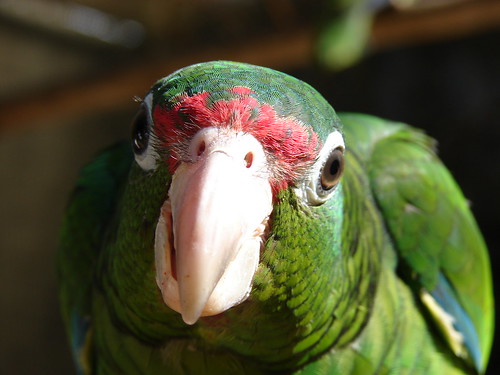Lorikeets on the loose in Dunedin
 Friday, May 1, 2009 at 4:26
Friday, May 1, 2009 at 4:26
 Friday, May 1, 2009 at 4:26
Friday, May 1, 2009 at 4:26  Thursday, April 30, 2009 at 5:12
Thursday, April 30, 2009 at 5:12  Cayman parrot on stamp.The Cayman Parrot, the national bird of the Cayman Islands, received a helping hand from Cayman Wildlife Rescue during Earth Week. The organisation hosted ‘Playtime for Parrots’ on Saturday,25 April.
Cayman parrot on stamp.The Cayman Parrot, the national bird of the Cayman Islands, received a helping hand from Cayman Wildlife Rescue during Earth Week. The organisation hosted ‘Playtime for Parrots’ on Saturday,25 April.
The programme was designed to educate children on the plight of the Cayman Parrot and how protecting the environment will also protect the Cayman Parrot. After watching the presentation ‘Are you as Green as a Cayman Parrot?’ youngsters were enlightened on the link between Cayman’s forests and the Cayman Parrot and how this National Symbol depends on green spaces for food and nesting. After the presentation the children constructed toys for rescued Cayman Parrots.
Cayman Wildlife Rescue is tasked with the rehabilitation and release of injured, sick and orphaned wildlife; species such as the Cayman Parrot are brought in each year for care. This low–flying species is at risk for being hit by oncoming traffic and each year several are brought in for injuries from cars.
According to Alison Corbett, project manager, the programme has proven quite successful.
 Thursday, April 30, 2009 at 4:44
Thursday, April 30, 2009 at 4:44  Puerto Rican Parrot. Image: Pablo Torres, USFWS Despite more than 40 years of conservation efforts, the Puerto Rican parrot (Amazona vittata) remains one of the world's most critically endangered birds, with only an estimated 30 to 40 parrots left in the wild. They exist in just a single location, Puerto Rico's El Yunque National Forest.
Puerto Rican Parrot. Image: Pablo Torres, USFWS Despite more than 40 years of conservation efforts, the Puerto Rican parrot (Amazona vittata) remains one of the world's most critically endangered birds, with only an estimated 30 to 40 parrots left in the wild. They exist in just a single location, Puerto Rico's El Yunque National Forest. Thursday, April 30, 2009 at 4:17
Thursday, April 30, 2009 at 4:17 CAMBRIDGE, Mass. -- Researchers at Harvard University have found that humans aren't the only ones who can groove to a beat -- some other species can dance, too. This capability was previously believed to be specific to humans. The research team found that only species that can mimic sound seem to be able to keep a beat, implying an evolutionary link between the two capacities.
 Tuesday, April 28, 2009 at 12:24
Tuesday, April 28, 2009 at 12:24